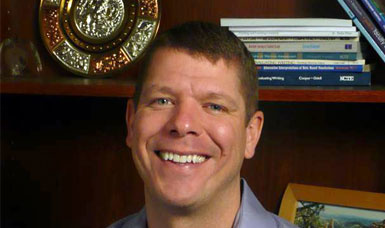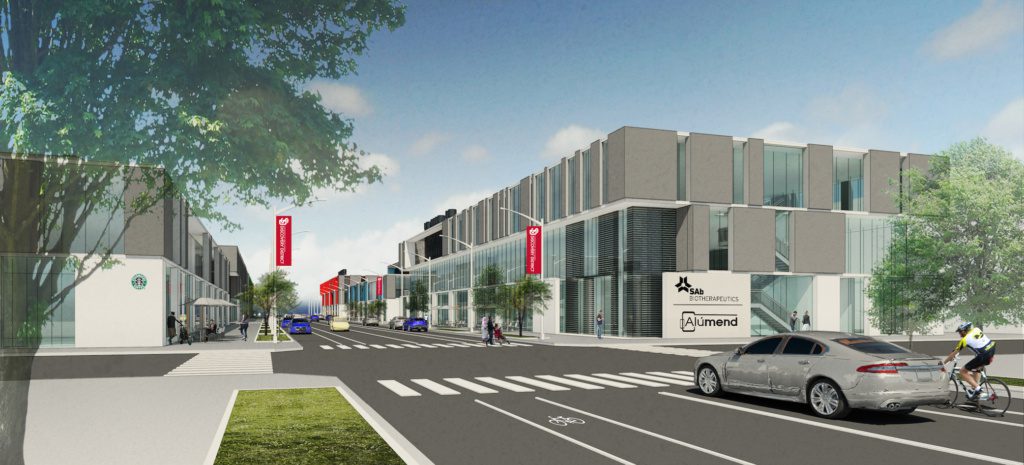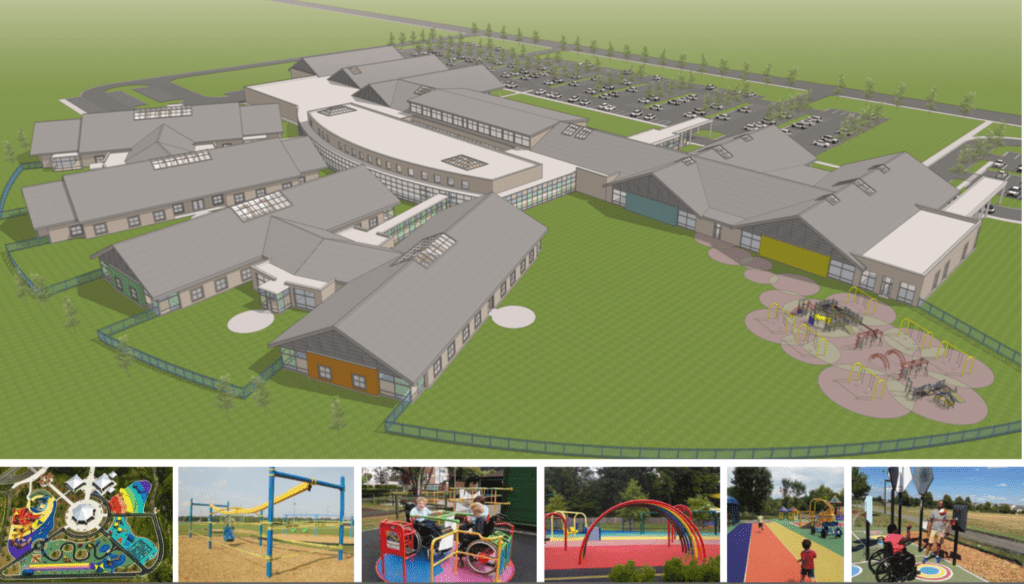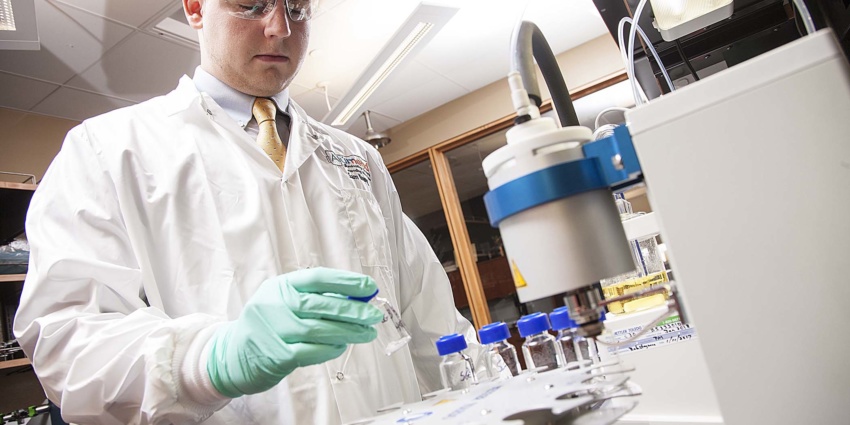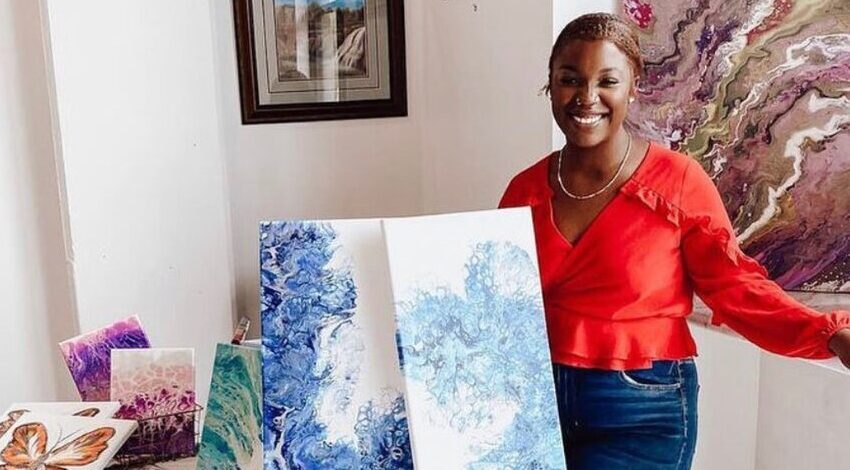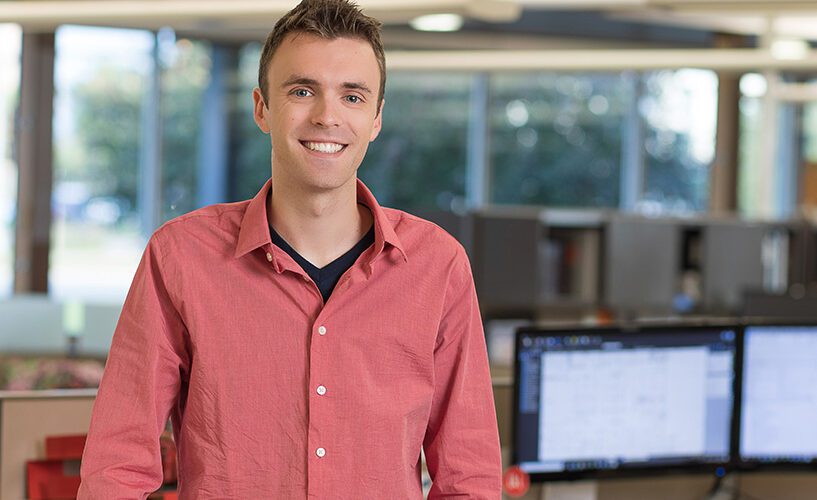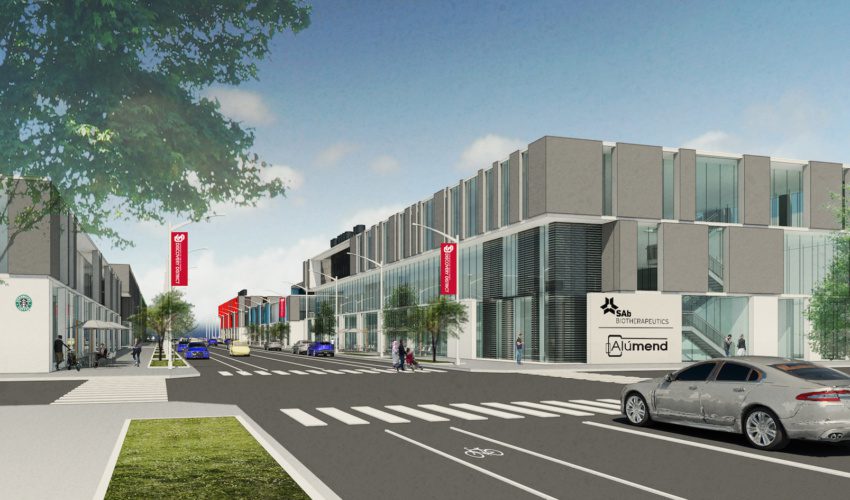New Discovery District leader shares vision for innovative campus
Feb. 17, 2020
This paid piece is sponsored by South Dakota Biotech.
Mark Brown feels at home in a laboratory and in a boardroom, in a classroom and in a startup.
It’s a combination of experiences that positions him well for his latest role as president of the USD Discovery District in Sioux Falls.
Brown is relocating from Colorado, where he has held multiple roles in business and academia. He holds a Ph.D. in molecular genetics and microbiology, and has built his career in research and leadership at Colorado State University.
He has more than 12 years of experience in the pharmaceutical industry and has served as vice president for research and development at CBR International Corp., a biopharmaceutical company, and as executive lead of global and health disparities for the Colorado School of Public Health.
His experience includes leading the Colorado State University’s Institute for Teaching and Learning, including its office of undergraduate research, office for service learning, office for scholarship and fellowship advising, and student engagement. He also has served as a molecular oncologist, a faculty member in clinical sciences and as the chair of a graduate program overseeing a six-university consortium.
“From a biotech perspective, we’re excited to welcome Mark into this new role,” said Joni Johnson, executive director of South Dakota Biotech. “His experience, relationship and vision are going to help us build on the foundation and momentum we’re experiencing in this industry and help us realize the potential that exists to grow our bioscience economy at the Discovery District.”
We sat down with Brown to learn more about his vision for his new role.
What attracted you to this role?
I have had a foot in academia and a foot in industry for a long time, really for most of my career. I held various executive-level positions, including most recently vice president for research and development at a pharmaceutical company, so the blend of business, research, academics and private industry that’s associated with serving this role at the Discovery District aligns perfectly with my passion, my experience and, frankly, what I’m good at. I see myself as a visionary as well as someone who rolls up his sleeves to get things done, and the position at the Discovery District provides me ample opportunities to do both.
What are some of your first impressions on the activity and potential here?
So far, I would say a solid foundation has been established. We have some strong anchor tenants in SAB Biotherapeutics and Alumend, and a growing number of startups incubating in the GEAR Center. We’re excited that LifeScape recently executed a letter of intent to lease almost 32 acres and develop $62 million in facilities, so things are moving.
I’ve been in discussions with other prospective tenants from the pharmaceutical industry. We’re really beginning to nucleate around a human health focus, although that’s not all we’ll do. I’ll also be working with USD to evaluate other areas of innovation with an eye for other technologies that can be incubated in the Discovery District and ultimately translated to commercial applications for the benefit of South Dakota. It’s critical we build upon the synergy of academics and research institutions to ensure more of the intellectual property from our state’s universities will be translated to revenue-generating activities in South Dakota.
There’s quite a bit of building activity coming this year. Can you catch us up?
We’re working on major infrastructure such as that to house SAB and Alumend for which we’re entering the late stages of the design development phase. And with the LifeScape project moving fairly quickly, we’ll be looking at developing that 32 acres in the near term.
We also have limited GMP (good manufacturing practice) facilities right now, so I’m excited that discussions have begun to expand operations in the aseptic fill and finish suite in the GEAR Center. That’s a bottleneck in our industry. We have limited GMP facilities to take on contract development and manufacturing. So as we add capacity, I see us being able to develop revenue quickly, and discussions are underway to expand that GMP facility. Right now, our facility can handle phase one applications, and we want to scale up to handle phase two. We’re also aligning ourselves with the Animal Resource Center in Vermillion to enhance our contract research capability.
Why do you think LifeScape is a good fit for the Discovery District?
It’s a wonderful fit for a campus that involves a university that has a medical program and that has a robust health science program. The presence of LifeScape’s hospital and school will create countless new possibilities for faculty collaboration among clinicians, rehab specialists and a major research institution, as well as educators.
From innovations in technology to medical devices, LifeScape, USD and the Discovery District are really poised to make great contributions to the mission of LifeScape and other organizations of its kind throughout the world. And I’m most excited for our students to be part of those local, regional and global impacts. There’s no better way to train the next generation of professionals than by applying theory from the classroom to solve real-world problems and answer practical questions.
The vision for this campus was an “innovation district.” Do you think that’s still a realistic and appropriate vision?
It is realistic. It is appropriate. And it’s truly necessary. The Discovery District will ultimately be the site of upwards of 2,800 jobs in Sioux Falls. We need restaurants, coffee shops, conference facilities, retail and more to create an environment where people can “live, learn, work and play.” This has been developed into a master plan for the facility.
I envision an enterprise that’s going to bring revenue to the state of South Dakota, to the Sioux Falls area and to the surrounding region, one that’s going to bring new jobs to this region, new expertise and specialization to the state. And it’s one that will serve as a workforce development initiative that includes current and future students and establishes new academic programs that attract talented students nationwide and worldwide, and that takes advantage of the exceptional skills of our students and faculty alike.
There are natural synergies between the Discovery District, USD and the Community College for Sioux Falls for programs that could support both the needs of the district and of industry, but I’ve also reached out to other universities in the state to see how we can best position opportunities for students throughout the state.
I firmly believe we should leave no stone unturned when it comes to realizing the discoveries and innovations we have in our state’s universities, the Sioux Falls area and throughout South Dakota. We should be an incubator for those innovations and provide the support and expertise for disclosing inventions while protecting IP and, when appropriate, assist with patenting and licensing and establishing new businesses.
I also envision a mixed-use campus, with a boutique hotel that would support a range of meetings and conferences hosted by the Discovery District but sponsored by industry. I envision unique restaurants where students can conduct internships related to nutrition science or small-business management and marketing. I envision a few local coffee shops. I would love to see a microbrewery. I’m excited. These are going to be informal gathering places in the Discovery District for students to conduct internships or for us to form industry partnerships.
And, of course, I envision bioscience anchor tenants, from startups to commercial companies. And I envision bringing in tenants who will contribute by providing other types of internships or services tenants need on-site.
What are you going to be tackling as far as new business development? What kind of additional uses do you feel confident you can attract?
I would say anything in the biosciences. Realistically, are we going to attract any of the big tech and bioscience industry players from the East or West Coast? Some, but the hubs on the coasts will likely always retain the largest chunk of that industry even though the cost of doing business is ridiculously more expensive in those places. We’ve got a beautifully favorable business environment in South Dakota and in the Sioux Falls area, so I’ve got plenty to work with when it comes to attracting industry.
We can also draw a large chunk of the service industry around the pharmaceutical and device industries – even serving as a depot for clinical trials. We are perfectly positioned for nationwide clinical trials and to serve as a site to ship out materials under regulated conditions.
I also think we can draw big players in the biosimilars industry. South Dakota is more vocal than any other state when it comes to demanding something be done about these precipitously increasing drug and biologics prices. Generics are a big part on the drug side, and biosimilars are a recent entry on the biologics side. Biologics are often found to be safer and more effective, but they’re also more expensive to make, and there was previously no analogous pathway to that of generics with the FDA for biologics. An increasing number of companies are moving overseas to manufacture their drugs and biologics. If companies are looking to move to a more favorable place to do business than Boston or San Francisco or San Diego, why not move to South Dakota before you move to India or China.
The GEAR Center also will be essential to partnerships I’m developing with pharmaceutical sponsors. Our hope is to bring more of that industry to Sioux Falls, where we are positioned to train our workforce literally on-site. There’s a steep learning curve in the pharmaceutical industry – it’s literally like learning another language – and companies invest thousands training students once they are out of school. If we can train our graduate students while they are still here in internships, when they enter industry, they can hit the ground running. We’re really unique in that the Discovery District is set up the way it is. It’s a research park with a campus on-site, and we need to take full advantage of that.
If someone would like to learn more about the Discovery District, how can they reach out?
I am a hands-on person. So all my contact information is on our website, and it’s my direct phone line. No one screens my emails. And if you’re in the area, I’m the kind of person who likes to chat face-to-face, but I’m always available for a phone call. Because it is a mixed-use, innovation-focused space, there is a lot of opportunity for someone with just about any type of interest who is creative enough to fit within the vision of the Discovery District. The more creative the more excited I get about it, so I welcome anyone with interest to reach out to me.

